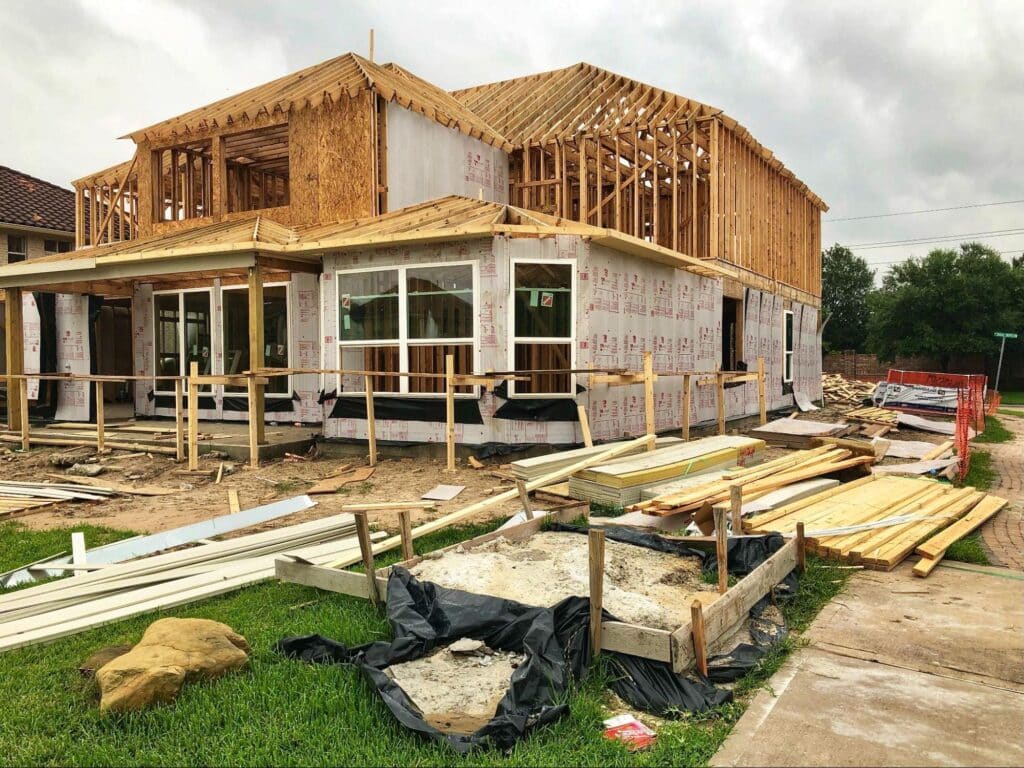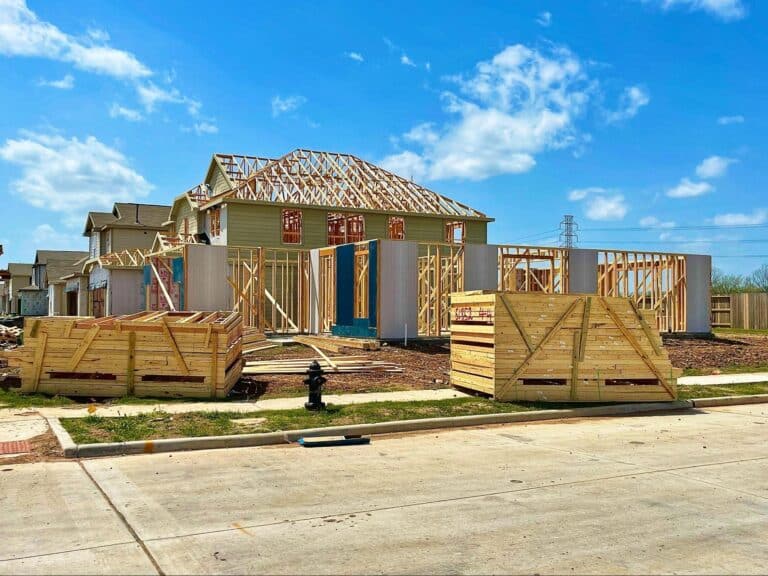Building a high-quality home on a budget is an achievable goal, even as housing prices rise in places like Indiana. The key is not to cut corners, but to make strategic choices through thoughtful planning. By focusing on efficient design, modern construction methods, and long-term value, you can significantly reduce both the initial build cost and future expenses, creating a durable and comfortable home without overspending.
This guide outlines five powerful techniques to help you manage costs while maintaining high standards. We will explore how value-engineered layouts, sustainable materials, and a focus on energy efficiency can deliver substantial savings. We’ll also present five powerful techniques to manage costs and reveal the common mistakes that can derail a budget, ensuring your new home aligns perfectly with your budget and vision.
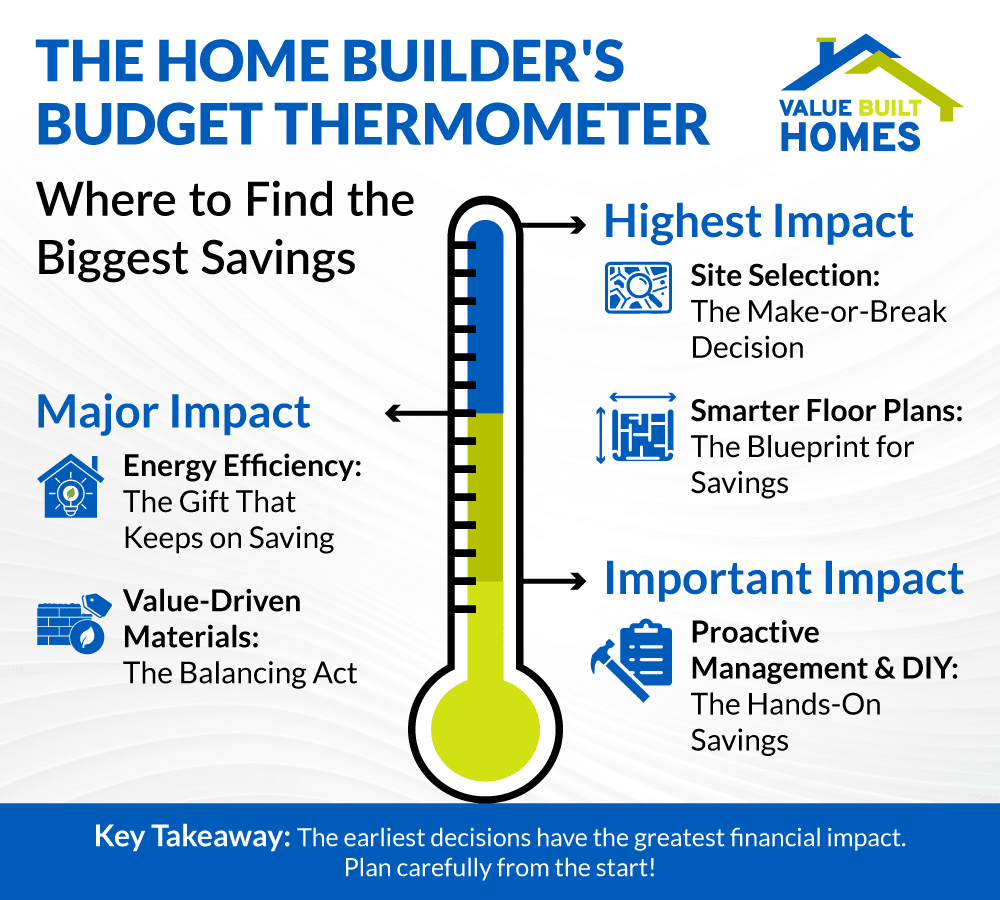
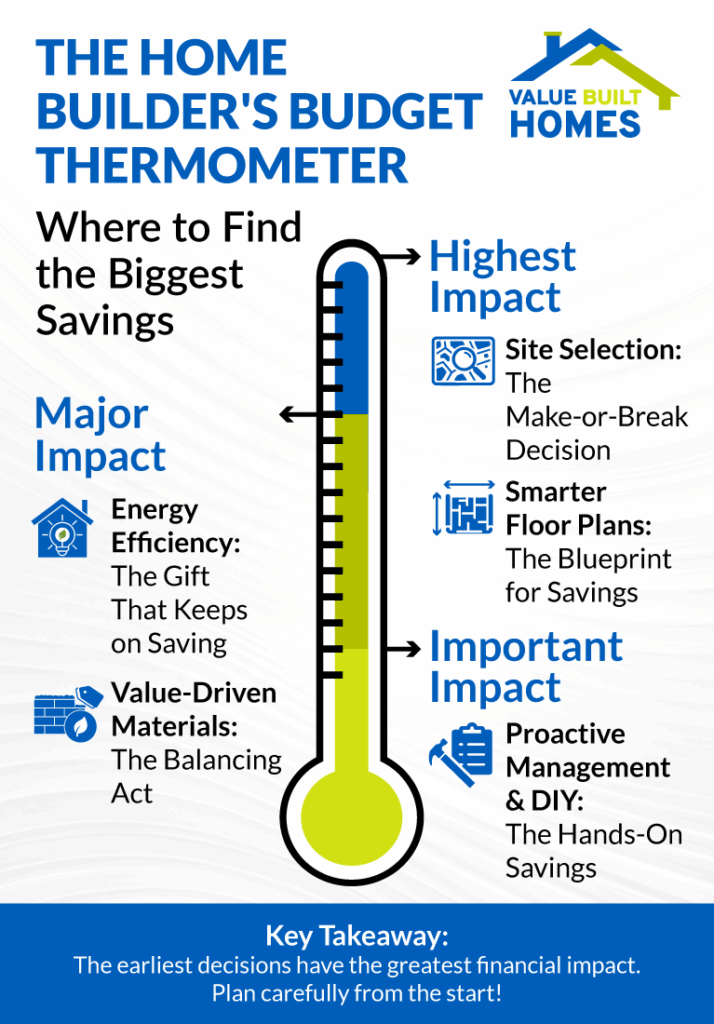
1. Start Before the House: Strategic Site Selection
Before you think about floor plans or materials, your first and most critical budget decision is the land itself. The hidden costs buried in the ground can quickly derail an otherwise affordable project. A cheap lot can quickly become a money pit if it requires extensive preparation. When evaluating a property, look beyond the price tag and investigate these crucial cost factors:
- Utility Access: Does the lot have easy access to public water, sewer, and electricity? If not, the cost of drilling a well, installing a modern septic system, and running power lines from the nearest road can add tens of thousands of dollars to your budget.
- Topography and Excavation: A flat, clear lot is the most affordable to build on. A steeply sloped or heavily wooded property will require significant and costly excavation, grading, and tree removal before a foundation can even be poured.
- Soil Quality and Drainage: Poor soil may require expensive engineering solutions to support your foundation. A simple soil test is a small upfront investment that can save you from catastrophic budget overruns later.
- Zoning and Permits: Ensure the land is zoned for residential construction and understand the local permit fees and regulations. Navigating complex zoning issues can lead to costly delays and unexpected expenses.
Choosing an accessible site with straightforward requirements is the foundational step to keeping your entire project on budget.
2. Design Smarter, Not Bigger: Optimize Your Floor Plan
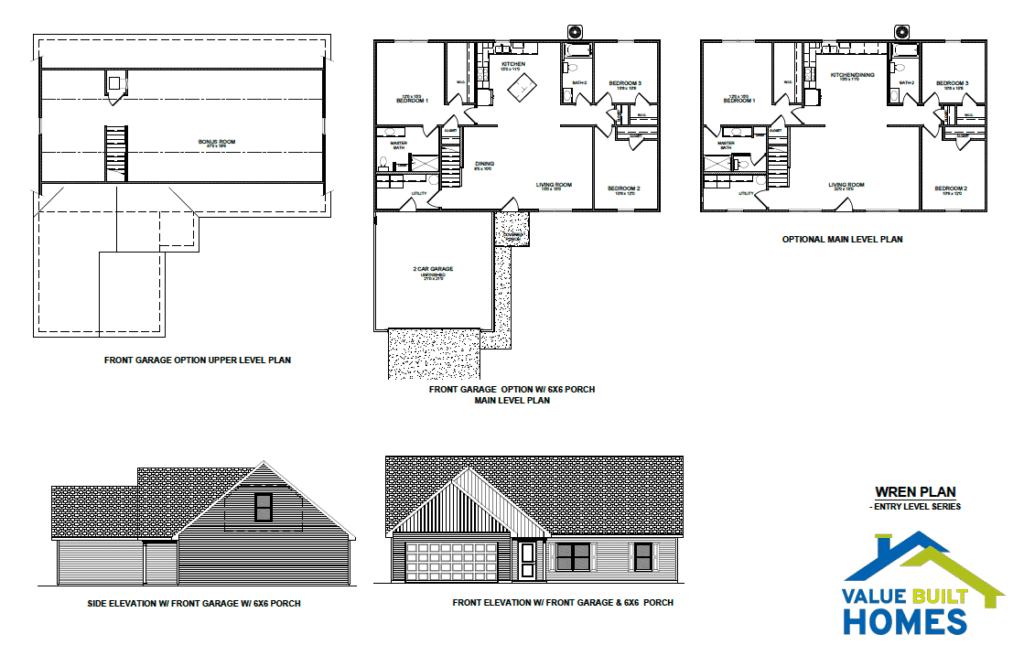
The foundation of a budget-friendly home is its footprint. A simple, well-thought-out layout reduces complexity, minimizes material waste, and speeds up construction. Opt for rectangular or square designs, as they are more efficient to frame, insulate, and roof than complex shapes with numerous corners and gables.
Inside, streamlined living areas mean fewer structural complexities and lower maintenance requirements over time. An open-concept layout that combines the kitchen, living, and dining areas, for instance, can eliminate unnecessary hallways or partitions, reducing the need for extra materials like drywall and additional electrical wiring.
Plan for Natural Light
A smart design uses nature to its advantage. By orienting living spaces toward the sun and incorporating large, well-placed windows, you can reduce your reliance on electric lighting during the day. This simple, no-cost strategy not only lowers your future utility bills but also creates a more pleasant and welcoming living environment.
Design for the Future
Think about your long-term needs. If you might want to add another bedroom or a workshop down the line, plan for it now. Simple design choices, like including plumbing stub-outs for a future bathroom or designing a roofline that’s easy to extend, can save you thousands in renovation costs later. This foresight allows your home to adapt to your changing needs without expensive and complex retrofits.
3. Choose Materials for Value, Not Just Price
Selecting the right materials is a balancing act between upfront costs and long-term durability. While it’s tempting to choose the cheapest option, investing in quality materials often saves money over the life of your home by reducing maintenance and replacement costs.
Balance Upfront vs. Long-Term Costs
Modern materials like engineered wood and composite products are designed to resist warping and moisture damage, providing greater stability. Insulated concrete forms (ICFs), for example, serve as both structure and insulation, significantly lowering future heating and cooling bills.
While these may have a higher initial cost, they prevent expensive repairs and yield long-term savings. The same principle applies to eco-friendly options like bamboo flooring or low-VOC paint, which contribute to healthier indoor air and reduce the need for replacements.
Practical Tips for Material Selection
- Compare bulk purchases: Larger orders can help you secure discounts from suppliers.
- Shop local: Locally produced or reclaimed materials can reduce delivery costs and support the regional economy.
- Prioritize your investment: Allocate more funds to high-traffic areas like the kitchen. Investing in durable countertops and quality flooring here will pay off in longevity and home value, while you can save with simpler finishes in guest rooms or closets.
Before finalizing your choices, it’s wise to check Indiana building codes to ensure your materials comply with local regulations. Consulting resources from the National Association of Home Builders is also beneficial.
4. Build for the Future: Focus on Energy Efficiency
While a simple floor plan saves you money upfront, energy efficiency saves you money every month for decades. Investing in your home’s building envelope—the barrier between the indoors and outdoors—is one of the most effective cost-saving measures you can take.
Focus on these key areas:
- High-Quality Insulation: Proper insulation in your walls, attic, and floors is essential for maintaining a stable indoor temperature and reducing the workload on your HVAC system.
- Airtight Sealing: Sealing gaps around windows, doors, and electrical outlets prevents thermal bridging, where heat escapes through the frame of your home. This simple step conserves energy and prevents common issues like drafts and moisture.
- Energy-Saving Features: Upgrade to ENERGY STAR® appliances, energy-efficient windows, LED lighting, and smart thermostats to further lower your electricity consumption.
Indiana and Energy-Saving Rebates
Indiana residents can often benefit from local utility incentives and rebates for installing energy-efficient HVAC systems or making weatherization improvements. These programs reduce the upfront cost of these upgrades, making them an even smarter investment and bringing long-term savings within easier reach.
5. Be the CEO of Your Build: Smart Project Management & Strategic DIY
One of the most direct ways to control your budget is to take an active role in managing the project. A proactive, organized approach prevents surprises and ensures every dollar is spent wisely.
Smart Project Management
Clear budget frameworks and frequent communication with contractors can keep your build on track. A builder who understands your budget limits is more likely to suggest cost-effective adjustments when challenges arise. Additionally, using construction cost tracking tools provides real-time updates on expenses, helping you adjust when needed. Always include a contingency fund of 5-10% to handle unexpected costs like material price hikes or weather delays. This financial breathing room prevents you from having to compromise on quality later.
Strategic DIY: Know When to Hire and When to Help
You can save thousands on labor costs by performing certain tasks yourself. However, it’s crucial to assess your skill level honestly. High-impact DIY projects for a skilled homeowner include:
- Painting: Taking on interior or exterior painting can save hundreds or even thousands.
- Landscaping: Planting native trees, shrubs, and flowers yourself can be rewarding and cost-effective.
- Fixture Installation: Installing pre-made kitchen cabinets, bathroom vanities, or light fixtures is often straightforward.
It is critical to know your limits. Complex tasks like electrical wiring, plumbing, and structural work should always be left to licensed professionals. Mistakes in these areas are not only costly to fix but can also create serious safety hazards. The smartest approach is a balanced one: save money where you can, but invest in professional expertise where it counts.
Of course. Here is the new section, written in the same tone and style as your improved blog post.
3 Common Budget Mistakes to Avoid

Building a home on a budget is as much about avoiding costly errors as it is about making smart choices. Even with a perfect plan, a few common missteps can derail your finances. By anticipating these pitfalls, you can protect your budget and ensure a smoother building process.
1. Ignoring Site Preparation Costs
A seemingly affordable plot of land can hide thousands of dollars in necessary prep work. Many first-time builders get so focused on the house itself that they overlook the costs buried in the ground. Before a foundation can be poured, your site must be cleared, graded, and have access to utilities. If your lot is heavily wooded, tree removal can cost a small fortune. Similarly, if it lacks public utility access, the expense of drilling a well, installing a septic system, and running power lines from the road can bust your budget before construction even begins. Always get a clear estimate for site work before you finalize your land purchase.
2. Making Late-Stage Design Changes
One of the fastest ways to inflate your construction budget is to change your mind after the work has started. Altering the floor plan once the foundation is poured or the framing is up is not a simple adjustment—it’s a costly process that creates a domino effect. It leads to expensive “change orders” from your builder, wastes materials that have already been purchased, and causes significant labor delays as crews redo their work. Finalize your floor plan, window placements, and electrical layout before breaking ground, and commit to the plan to keep costs under control.
3. Underestimating the Cost of Finishes
The structure of your home is just one part of the equation; the finishes are what make it a home, and their costs add up quickly. It’s easy to create a budget for the “bones” of the house but forget to allocate enough for the details that come last. High-impact items like kitchen countertops, flooring, light fixtures, and even bathroom faucets can vary dramatically in price. A budget that doesn’t specifically account for these items will almost certainly fall short, forcing you to either compromise on quality or exceed your spending limit right at the finish line. Plan and price your desired finishes early in the process.
Building Budget-Friendly Homes: Smart Choices for Long-Term Savings
Building a budget-friendly home is about making smart, informed choices and sidestepping common pitfalls. By prioritizing efficient floor plans, cost-effective materials, and long-term energy savings, you lay the groundwork for an affordable build. When you combine these strategies with proactive project management and an awareness of the key mistakes to avoid, you can confidently control costs and prevent unexpected overruns.
If you are ready to turn these strategies into a reality, the right partner can make all the difference. Contact Value Built Homes for expert guidance on affordable floor plans and a streamlined building process tailored to your needs. Take the next step toward building a beautiful, efficient, and cost-effective home that you can enjoy for years to come.

